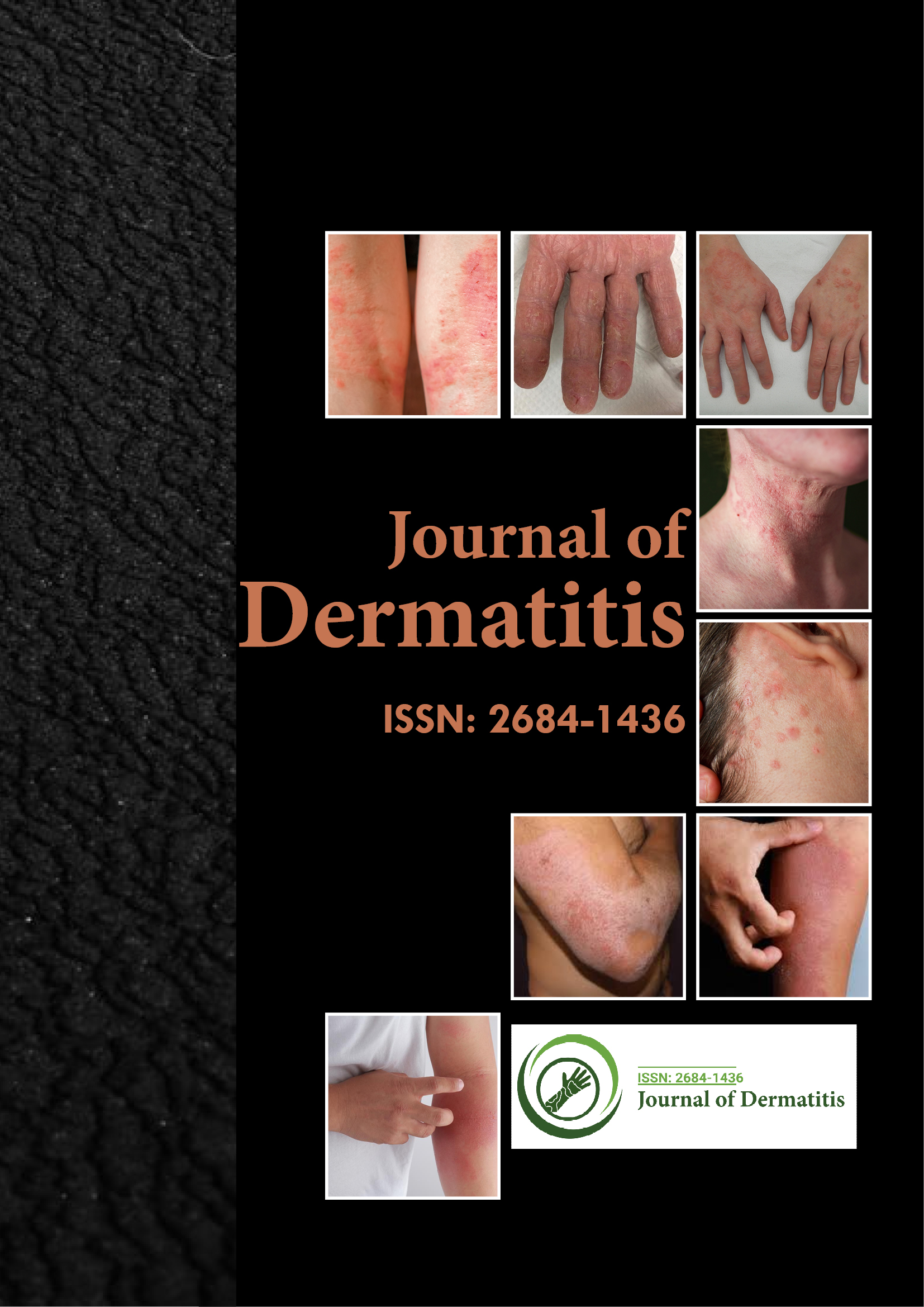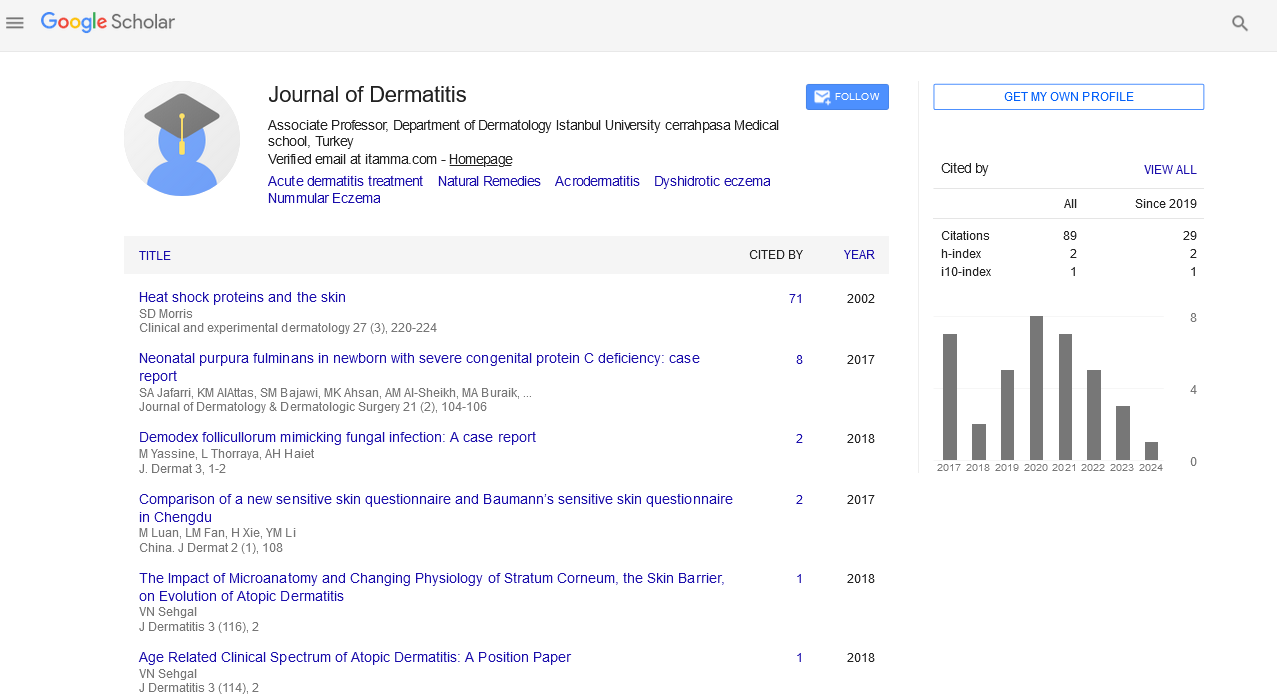Indexed In
- RefSeek
- Hamdard University
- EBSCO A-Z
- Euro Pub
- Google Scholar
Useful Links
Share This Page
Journal Flyer

Open Access Journals
- Agri and Aquaculture
- Biochemistry
- Bioinformatics & Systems Biology
- Business & Management
- Chemistry
- Clinical Sciences
- Engineering
- Food & Nutrition
- General Science
- Genetics & Molecular Biology
- Immunology & Microbiology
- Medical Sciences
- Neuroscience & Psychology
- Nursing & Health Care
- Pharmaceutical Sciences
Commentary - (2024) Volume 9, Issue 2
Targeted Treatment in Dermatology: Abrocitinib's Mechanism of Action and Clinical Impact
Emma Green*Received: 29-May-2024, Manuscript No. JOD-24-27943; Editor assigned: 31-May-2024, Pre QC No. JOD-24-27943 (PQ); Reviewed: 14-Jun-2024, QC No. JOD-24-27943; Revised: 21-Jun-2024, Manuscript No. JOD-24-27943 (R); Published: 28-Jun-2024, DOI: 10.35248/2684-1436.24.9.240
Description
Abrocitinib is a small molecule Janus Kinase (JAK) inhibitor that has received considerable attention for its therapeutic potential in various dermatological conditions, particularly atopic dermatitis and other inflammatory skin disorders. Historically, the development of targeted therapies such as JAK inhibitors represents a change towards in dermatological treatment strategies. This article aims to explain the mechanism of action of abrocitinib, contextualize its historical development and its development while addressing the positive and negative aspects of its use in the treatment of skin infections.
Abrocitinib’s selective inhibition of JAK1 provides a targeted approach to treating inflammatory skin disorders, particularly atopic dermatitis. This specificity provides an advantage over traditional therapies, which often have broader immunosuppressive effects. In addition to its efficacy in atopic dermatitis, there is growing interest in exploring its use for other immunemediated skin conditions, such as psoriasis and chronic urticaria, where dysregulated immune responses play an important role. However, the risk of increased infections due to immunosuppression is a notable concern, requiring careful monitoring in patients with a history of infections.
The emergence of JAK inhibitors stems from the understanding of signaling pathways involved in the immune response. The JAK-STAT signaling pathway is essential for signaling of various cytokines to the nucleus, ultimately influencing cell growth, survival and differentiation. Abrocitinib selectively inhibits JAK1, thereby interrupting the signaling pathway initiated by inflammatory cytokines such as Interleukin-4 (IL-4) and Interleukin-13 (IL-13), which are significantly implicated in atopic dermatitis. This selective inhibition reduces inflammation and may ease symptoms associated with skin infections involving these pathways. Results from clinical studies have demonstrated that Abrocitinib can significantly improve skin condition and reduce pruritus (itching), a characteristic of inflammatory skin disorders. In addition, oral administration provides a practical alternative to topical treatments, targeting a broader patient population.
Despite these potential results, the use of abrocitinib is not without challenges and disagreement. The introduction of any new drug requires a full understanding of its potential side effects and risks. In clinical trials, patients reported a range of side effects, including headache, nausea and increased susceptibility to infections. This is largely due to the immunosuppressive nature of JAK inhibitors, which can impair the body's ability to respond to infectious agents. Therefore, the risk-benefit profile of abrocitinib should be carefully considered by healthcare professionals, especially in populations that are already immunocompromised or have a history of recurrent infections.
The historical context of the development of abrocitinib illustrates a broader trend toward personalized medicine in dermatology. The increasing prevalence of atopic dermatitis, particularly in children, calls for the development of more effective treatments. Traditional treatments, such as topical corticosteroids and systemic immunosuppressants, are often inadequate due to limitations in efficacy and safety. Therefore, abrocitinib provides a novel mechanism of action that targets specific pathways involved in skin inflammation, representing a change in the treatment from generalized immunosuppression to more targeted interventions.
However, the marketing of JAK inhibitors such as abrocitinib must also be criticized. As pharmaceutical companies invest heavily in the development of these targeted therapies, concerns about price and accessibility are emerging. The financial burden on patients and health systems can be significant, especially in low-income settings where access to advanced treatments may be limited. Ensuring equitable access to these advances in dermatologic therapy remains a pressing challenge that highlights the exchange between scientific progress and social health equity.
In conclusion, abrocitinib represents a significant advance in the treatment of dermatologic infections through its targeted mechanism of action via the JAK-STAT signaling pathway. Its development reflects the historical trajectory toward more specific and effective therapies in dermatology. However, the positive impact of its use must be weighed against potential side effects and socioeconomic factors that influence access to treatment. As understanding of abrocitinib and its role in the management of skin infections continues to evolve, ongoing research is needed to maximize its therapeutic benefits while minimizing risks.
Citation: Green E (2024). Targeted Treatment in Dermatology: Abrocitinib's Mechanism of Action and Clinical Impact. J Dermatitis. 9:240.
Copyright: © 2024 Green E. This is an open access article distributed under the terms of the Creative Commons Attribution License, which permits unrestricted use, distribution, and reproduction in any medium, provided the original author and source are credited.

